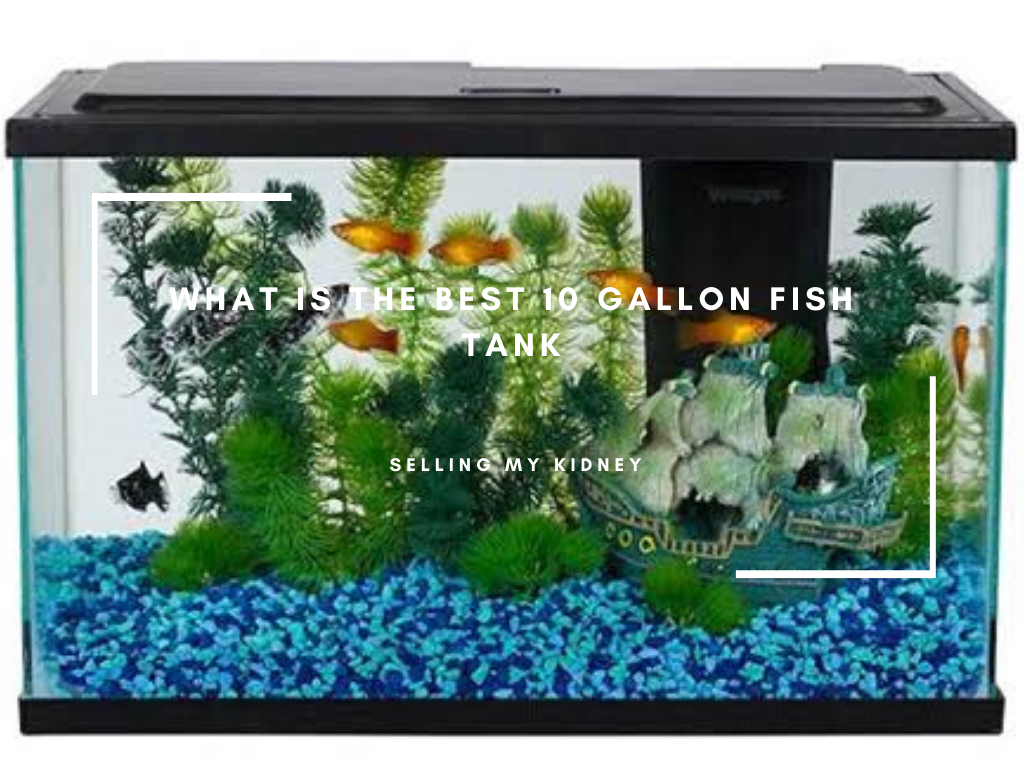Angelfish egg fertilization and care are important parts of the breeding process.
It requires careful attention to detail, patience, and knowledge to ensure successful hatching.
The steps involved include:
- Preparing a suitable environment for spawning.
- conditioning both parents before mating;
- Collecting the eggs from their nest site after they are laid by the female fish;
- Transferring them into a separate tank or container with clean water that has been treated with anti-fungal medication (to prevent fungus growth);
- Adding aquarium salt if desired (for additional protection against fungi);
- Gently stir up any debris on top of each egg so it can be seen clearly when viewed under magnification;
- Carefully removing dead embryos as needed using tweezers or other tools designed specifically for this purpose.
- Monitoring temperature levels throughout the incubation period until fry hatches out successfully!
Finally, providing proper nutrition during post-hatch development will help your angelfish grow healthy and strong.
With these simple yet effective tips, you should have no problem raising beautiful angelfish babies!
Angelfish Egg Fertilization Steps
Angelfish egg fertilization is an important step in the breeding process.
It involves several steps that must be followed carefully to ensure the successful reproduction of these beautiful fish.
The first step is for a male and female angelfish to pair up, which can happen naturally or through human intervention.
Once paired, they will begin courting behavior, such as swimming around each other and flaring their fins at one another; this helps them become familiar with each other before spawning begins.
After courtship has been established, it’s time for the actual act of mating.
During this stage, both parents release eggs and sperm into the water simultaneously so that when they mix together, some are successfully fertilized. In contrast, others remain unfertilized until later stages occur.
Finally comes post-fertilization care, where newly hatched fry needs protection from predators by being moved into separate tanks or containers away from danger.
Here food should also be provided regularly so growth rates stay healthy!
Angelfish egg fertilization requires patience, but if done correctly can result in many happy little baby angels ready to explore their new home!
Caring Tips For Angelfish Eggs
Angelfish eggs are a beautiful sight to behold!
Fertilizing and caring for them is an important part of the process.
Here’s your guide:
Prepare the tank
Make sure you have clean, warm water in your aquarium with plenty of oxygenation.
The temperature should be between 78-82°F (25-28°C).
Introduce male & female angelfish
Place one mature male and two or three females into the breeding tank together to get used to each other before spawning begins.
Feeding time
Provide high-quality food such as live brine shrimp, bloodworms, daphnia, etc., which will help stimulate egg production from both sexes.
Avoid overfeeding
Feed only what they can consume within 5 minutes twice daily during this period.
Spawning behavior
When ready to spawn, the pair may start swimming around rapidly while chasing each other until finally laying their eggs on flat surfaces like rocks or plants inside the aquarium.
Egg fertilization
Afterward, the males release milt that contains sperm cells onto these laid-out eggs, thus completing the fertilization process successfully if done correctly by experienced aquarists who know how it works best!
Care tips
Remove any unhatched/unfertilized angel fish eggs immediately after 24 hours post-spawning.
Keep up a good filtration system throughout the incubation period.
Maintain optimal pH levels at the 7-8 range using appropriate additives when needed too.
And lastly, ensure no direct sunlight hits the tank’s surface either since UV rays could damage delicate embryos developing inside those precious little orbs!
How Often Do Angelfish Lay Eggs?
Angelfish lay eggs often!
They usually spawn every two weeks, which can vary depending on the species.
Here are some important facts about angelfish egg-laying:
- Angelfish typically start laying eggs when they reach maturity (around 6 months old).
- The female angel fish lays her fertilized eggs in a bubble nest created by the male.
- After spawning, it takes around 3 days for the fry to hatch and another 5–7 days before they become free swimming.
- During the breeding season, an adult pair of angelfish may produce up to 500 or more offspring per month!
This is why providing them with plenty of space is important if you plan on keeping multiple pairs together in one tank. Overcrowding could lead to stress and aggression among your angels.
It’s also essential that water quality be kept at optimal levels during their reproductive period.
Otherwise, there won’t be enough oxygen available for both parents and babies.
Which could result in death or disease amongst all parties involved.
How Many Eggs Do Angelfish Lay At A Time?
Angelfish lay eggs in batches of up to 500 at a time.
The number of eggs laid depends on the size and age of the fish, with larger angelfish laying more than smaller ones.
Angelfish can spawn multiple times throughout their lives.
However, they usually only do so once or twice per year when conditions are right for breeding.
When spawning occurs, female angelfish will release her fertilized eggs into open water.
Males then come along and fertilize them externally by releasing sperm over them as she releases each egg batch from her mouth!
After this process is complete, it takes 24 hours for all the newly hatched fry (baby angels) to become free swimming.
After this point, they must be removed from adult tanks due to predation risk, otherwise known as “cannibalism” within an aquarium environment.
Especially if left unattended for the too-long post-hatching period!
How Long Does It Take For Angelfish Eggs To Hatch?
Angelfish eggs take about 5-7 days to hatch.
During this time, the parents will guard and fan their eggs with their fins to keep them oxygenated.
The temperature of the water is also important for successful hatching; it should be between 78°F – 82°F (25.5 °C – 27.8 °C).
Here are some key points:
- Eggs typically take 5-7 days to hatch
- Parents must protect & fan the eggs during the incubation period
- Water temperature must stay within a certain range (78°F – 82°F).
Once hatched, angelfish fry can feed on infusoria or newly hatched brine shrimp until they become large enough for other foods, such as flakes or pellets!
How To Care For Angelfish Fry After They Hatch?
Caring for angelfish fry after they hatch is an important part of successful breeding.
Here are some tips to help you get started:
- Provide a safe, clean environment with plenty of oxygen and no predators; use a separate tank or container designed for the fry.
- Feed them small amounts several times per day using high-quality food such as baby brine shrimp, micro worms, daphnia, or other live foods easily digested by young fish.
- Monitor water quality closely – keep ammonia levels low (0ppm) and pH between 6-7. perform regular partial water changes every few days to maintain good health in your aquarium system.
- Keep temperatures stable at around 78°F/25°C – any sudden fluctuations could cause stress on the delicate new arrivals!
These simple steps will ensure that your angelfish fry has everything they need to grow into healthy adults!
What Does It Mean When Angelfish Eggs Turn White?
When angelfish eggs turn white, the eggs are not viable and will never hatch.
This can happen for a variety of reasons:
- Poor water quality – If the tank is too dirty or has poor pH levels, this could cause egg mortality.
- Lack of nutrition – Angelfish need to be fed high-quality food to produce healthy offspring; if they don’t get enough nutrients, their eggs may die off before hatching.
- Stressful environment – Too much light or noise can also lead to dead embryos inside an angel’s egg sacs, turning them white over time. As well as other environmental factors, such as overcrowding, lead to aggression between fish, resulting in damaged/deadly fertilized eggs!
In conclusion, when angelfish lay unfertilized eggs, it usually indicates something wrong with their diet or living conditions.
Both are things you should consider when caring for these beautiful creatures!
What Can Cause Angelfish Eggs To Change Color?
Angelfish eggs can change color for a variety of reasons.
- The age and health of the female angelfish will affect egg quality; older or unhealthy females may produce lighter-colored eggs than younger healthy ones.
- Water temperature also plays an important role in determining egg color: cooler temperatures result in darker-colored eggs, while warmer waters lead to paler shades.
- Environmental factors such as pH levels and lighting conditions can cause changes too. If these are not optimal, then your angel fish’s eggs will likely not be their usual vibrant colors!
- Genetics play a part, too – some species have naturally brighter hues than others, so this could explain why you see different tones from one batch to another even when all other variables remain constant.
Examples include neon blue angels, which usually lay bright yellow/orangey-red hue. In contrast, wild-type varieties typically yield more muted brown/gray tints instead!
How To Remove Unfertilized Angelfish Eggs?
Removing unfertilized angelfish eggs is a necessary step in the breeding process.
Here are some tips on how to do it:
- Check for signs of fertilization – look closely at each egg and see if there are any black spots or veins, which indicate that they have been fertilized;
- Remove all non-fertilized eggs with tweezers – carefully pick up each one individually and place them into a separate container filled with water from your tank;
- Dispose of the removed eggs properly – you can either flush them down the toilet or bury them outside, away from pets/children;
- Clean out remaining debris – use an aquarium vacuum cleaner to remove leftover bits so as not to contaminate other parts of your tank environment!
Lastly, keep track of what has been done by writing down dates when these steps were taken (e.g., day 1 = removal).
This will help ensure successful future spawns!
How To Prevent Angelfish Eggs From Being Eaten?
To prevent angelfish eggs from being eaten, there are several steps you can take.
- Ensure the tank is well-maintained and clean; this will help reduce stress in your fish which may lead to egg-eating behavior.
- Provide plenty of hiding places for the female. So she has a safe place to lay her eggs away from predators such as other angelfish or larger fish species like cichlids.
- Feed high-quality foods containing essential vitamins and minerals both parents need during the spawning season. These nutrients will ensure the healthy development of their offspring!
- Remove any dead or decaying plants/debris regularly. Since they could attract unwanted visitors who might eat up all those precious little angel babies before they even hatch!
Examples: live aquatic plants (like Java Moss), PVC pipes with holes cut into them for easy access & exit points, and air stones. Remember – prevention is always better than cure when protecting our beloved finned friends’ future generations!
Angelfish Breeding Guide
Angelfish breeding is a rewarding and exciting experience.
Here’s your guide to getting started:
- Choose the right tank size – Angelfish need plenty of space, so choose an aquarium that’s at least 20 gallons in capacity for two adults or 30-40 gallons if you plan on having more than one pair of fish.
- Provide good water quality – Ensure the pH level stays between 6 and 8, with temperatures ranging from 72°F – 82°F (22–28 °C). Also, keep nitrate levels low by performing regular partial water changes every week or two using dechlorinated tap water. This will help reduce stress among angelfish pairs during spawning time as well!
- Select compatible mates – When selecting angel pairs, it’s important to ensure they are both healthy specimens without any visible signs of disease, such as white spots or fin rot, before introducing them into their new home together. Also, try not to mix different species within the same tank unless necessary since some may be aggressive toward each other when competing for food resources.
- Provide adequate nutrition & hiding places – Feeding high-quality foods like frozen brine shrimp/bloodworms and flakes can ensure reasonable growth rates. Also, providing ample cover via live plants/driftwood pieces also helps create natural territories, reducing aggression amongst angels too!
- Monitor behavior closely – Keep an eye out for courtship behaviors such as chasing after one another around corners. It is followed by egg-laying activities near surfaces like rocks where eggs are fertilized externally after being released from female bodies.
This usually happens overnight but could take several days, depending on the tanks’ conditions. Hence, patience is key here, folks!
Tank Conditions For Breeding Angelfish
When breeding angelfish, it is important to provide the right tank conditions.
The ideal size for an angelfish aquarium should be at least 20 gallons; larger tanks are even better!
Ensure your water temperature stays between 75-82°F and your pH levels remain around 6.5-7.0 (slightly acidic).
Additionally, you will need a good filtration system with plenty of oxygenation to keep ammonia and nitrite levels low – this can help prevent disease or stress on the fish during the spawning season.
You’ll also want to add some live plants like Java Fern or Anubias and driftwood branches, which look great and offer hiding places for fry once hatched from eggs!
Make sure there’s enough space between decorations so adult angels have room to swim freely without getting stuck in tight spaces.
This helps reduce aggression among them too!
In Conclusion: Angelfish Eggs Fertilization Steps And Care Guide
In conclusion, angelfish egg fertilization and care is a complex process that requires patience and dedication.
It involves several steps, such as:
- Preparing the tank for spawning,
- Conditioning the fish to spawn, and
- Collecting the eggs from their parents’ mouths or substrate surfaces after being laid by them
All of it to ensure the successful hatching of the fry.
It also includes providing proper water parameters like temperature range between 78-82°F (25-28°C) and pH 6.5–7 with low nitrate levels.
Frequent partial water changes are necessary during this period too!
Furthermore, once hatched, you must provide adequate nutrition through live food sources such as baby brine shrimp or microworms until they reach adulthood which can take up to 8 weeks, depending on species type & size.
Finally, I recommend that anyone interested in breeding these beautiful creatures do plenty of research beforehand.
So that all aspects involved are understood before attempting any reproduction activity – good luck!




